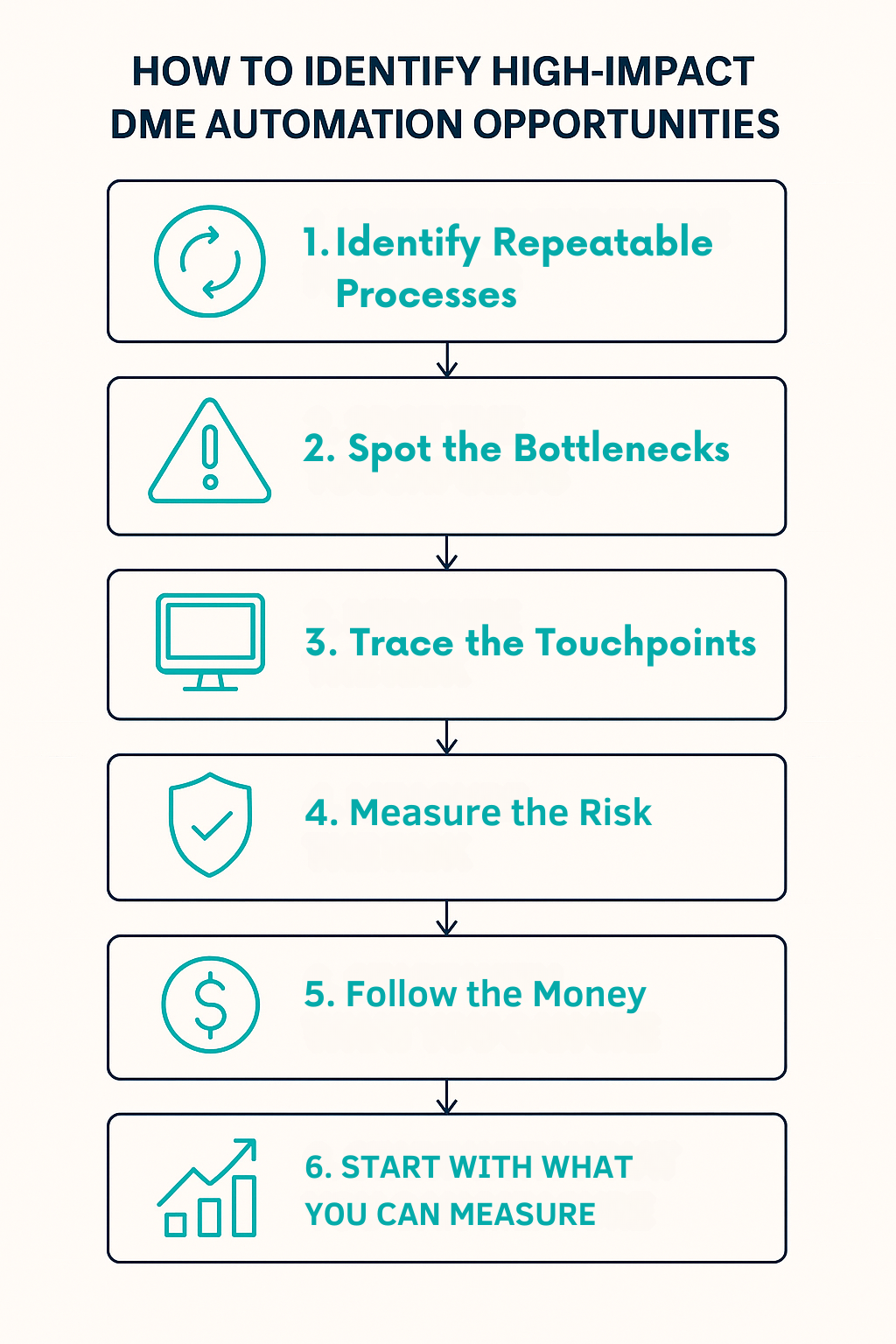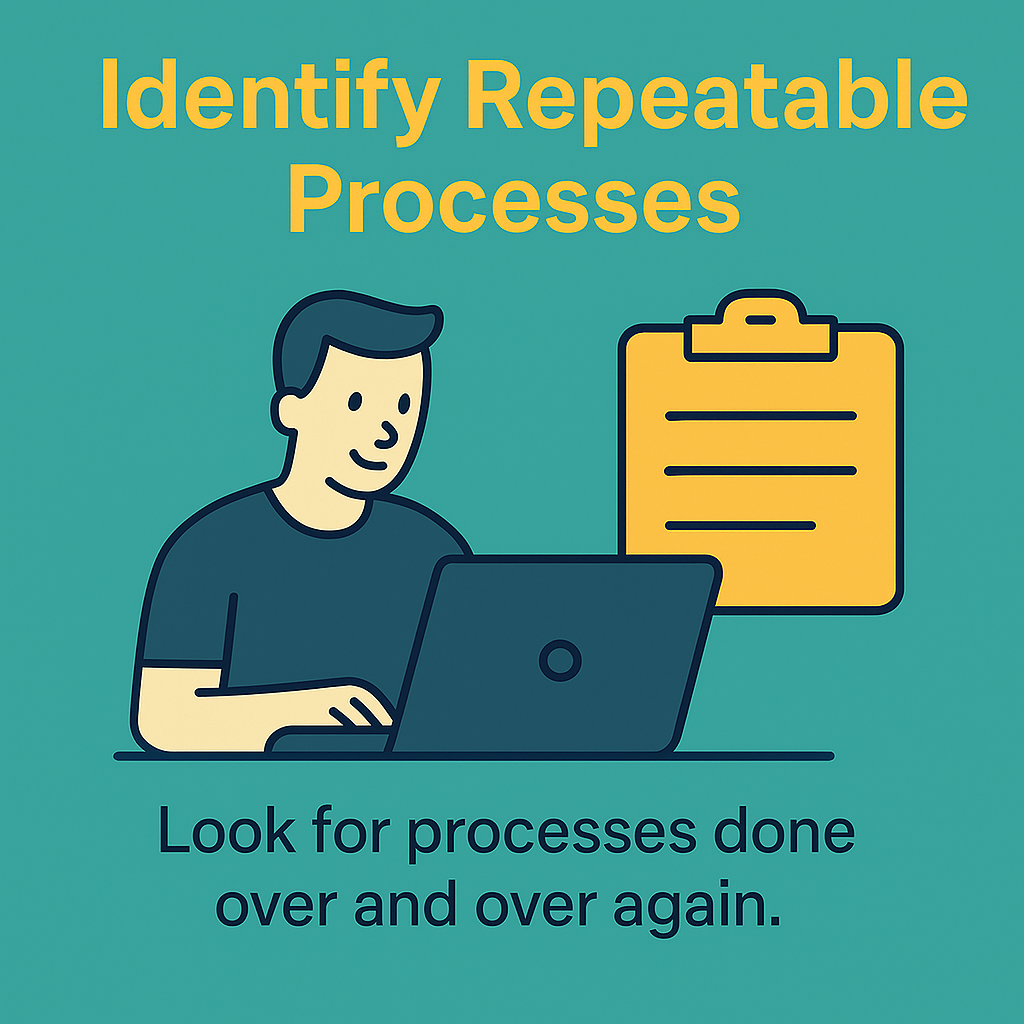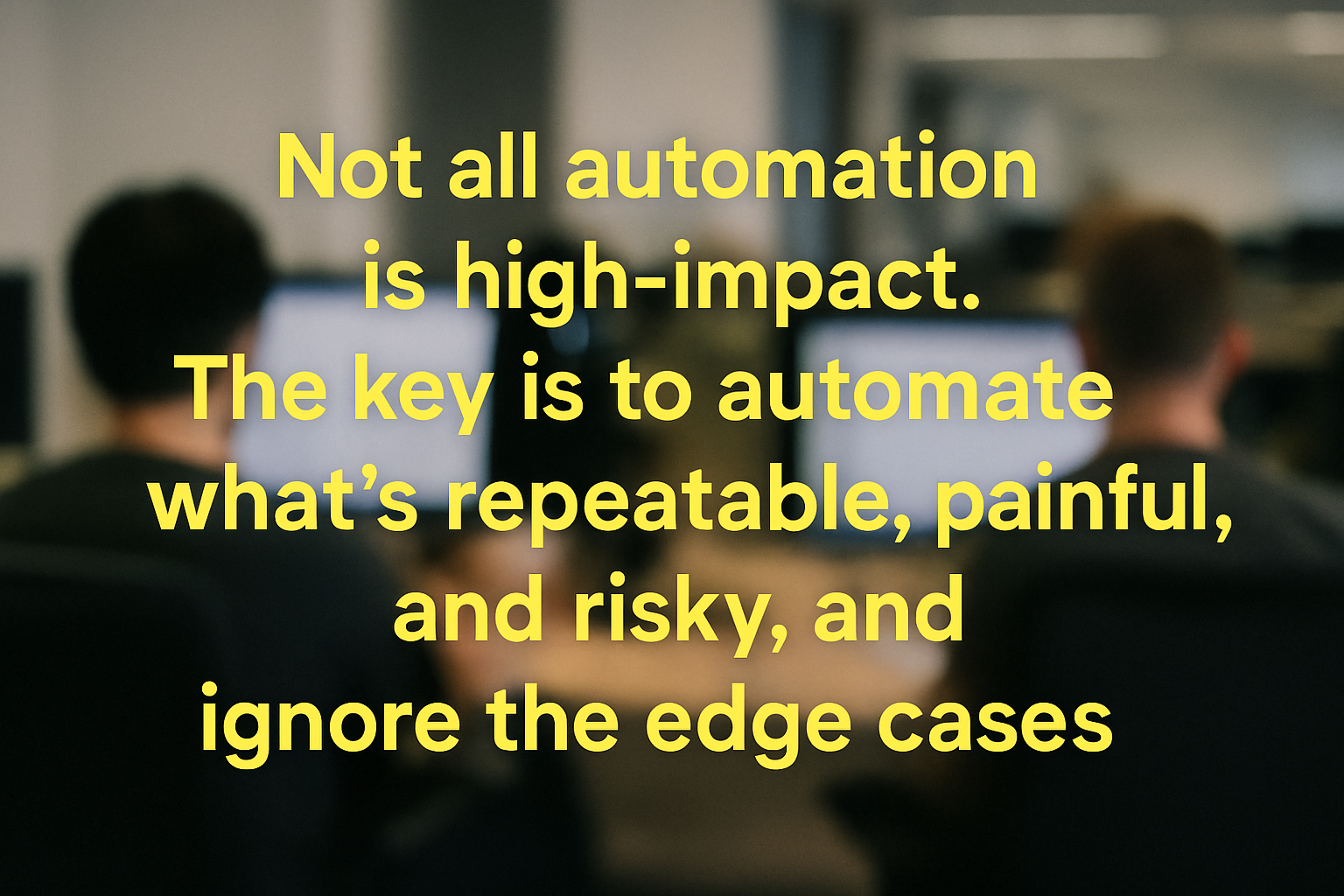Automation isn’t about replacing people. It’s about removing slow, manual tasks that drain time, delay revenue, and break your workflow as you grow.
But knowing that isn’t the hard part.
The real challenge? Figuring out where to start.
If your team is constantly retyping data, chasing paperwork, or touching the same order five times before it ships, automation can help! However, not every task delivers the same return.

The goal is to find fast wins and a path to scale.
Here’s a quick framework to help industry leaders identify high-impact DME automation opportunities without overhauling everything at once.
1. Identify Repeatable Processes
Begin by looking for any processes your team complete more than 10 times a day. That’s your first filter.
Think about:
- Intake and order confirmation
- Insurance verification
- Documentation checks
- Prior auth prep
- Refill tracking
- Billing prep
These are typically standardized, high-frequency tasks… and they’re often the most draining.

If it’s repeatable, it’s a candidate for automation.
2. Spot the Bottlenecks
Next, ask: where does the workflow break?
Maybe orders get stuck in WIP because a faxed face-to-face note hasn’t been entered. Maybe billing sits idle because insurance wasn’t verified in time. Maybe your team is copying data from one system to another just to move an order forward.
.png)
These friction points create delays, denials, and wasted hours.
If you’re hearing “we’re waiting on X” over and over, automation can likely eliminate the wait.
3. Trace the Touchpoints
How many people touch a task before it’s done?
.png)
If it takes three team members to confirm a single order, or if a biller has to open five portals to check one claim, that’s a red flag. The more handoffs involved, the more opportunity for error, delay, and burnout.
Automated workflows reduce touches by moving clean orders through automatically and routing exceptions to the right person, with the right context.
4. Measure the Risk
Some errors are annoying. Others are expensive.
Prioritize automating the steps that carry the highest risk if done wrong, like submitting a claim without documentation, missing a refill window, or billing for a CPAP rental without usage verification.
The goal isn’t just speed, it’s control. Automation gives you guardrails that prevent mistakes before they happen.
5. Follow the Money
Look at your revenue cycle. Where are the biggest delays between service and payment? Where are denials stacking up?
If your billing team spends hours reworking claims because of preventable intake mistakes, automation should start at the top of the funnel. If claims sit because the system can’t validate codes, focus on automating your pre-bill QA.
.png)
Revenue friction is often workflow friction. And cleaning it up with automation has one of the fastest ROI curves in the business.
6. Start with What You Can Measure
You don’t need to fix everything overnight. Start with one workflow where you can track:
- How long it takes now
- How many steps or touches it takes
- How many errors or denials it causes
Then build the automation around that. Once you have the data, you can show real-time savings in hours, claims, or turnaround time.
Where Most DMEs Start
Here are a few areas where we consistently see fast, high-value automation wins:
- Real-time insurance verification
- Automated WIP state changes in Brightree
- CPAP resupply scheduling and compliance checks
- Pre-bill validation (HCPCS, ICD-10, documentation presence)
- Automated data validation and flagging
These aren’t massive system overhauls. They’re surgical fixes to messy processes, and they pay off fast.

The Bottom Line
Not all automation is high-impact. The key is to automate what’s repeatable, painful, and risky, and ignore the edge cases (at least at first).
With the right starting point, you don’t just gain speed. You gain visibility, accuracy, and margin. You free up your staff to do real work, not rework. If you can pinpoint where the process stalls, where the team groans, or where the billing slows down, you already know where to automate.
You just need a smarter system to do it.


